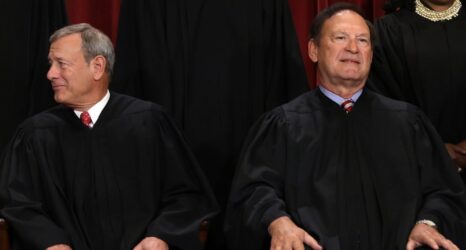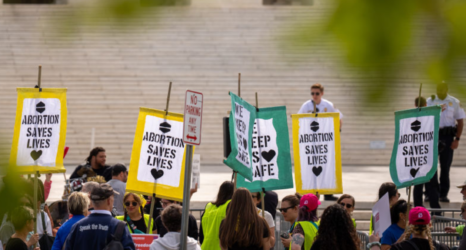Donald Trump’s presidency has been marked by relentless attacks on a woman’s right to abortion. On the campaign trail, Trump boasted about his plan to end legal abortion and overturn Roe—warning that women who sought abortions should and would be “punished.” Once in office, the Trump administration waged a war on Planned Parenthood and on the Affordable Care Act’s coverage options for abortion and contraception and pushed anti-abortion Justice Neil Gorsuch onto the Supreme Court. Most recently, the Department of Health and Human Services announced that healthcare providers could deny patients certain treatment based on their own moral or religious beliefs, including abortions and post-abortion care, and Trump called on the Senate to ban abortions administered after 20 weeks in a video address to attendees of the anti-abortion March for Life.
Overturning Roe won’t end abortion—but it will endanger women’s lives. In the decades preceding the landmark decision in 1973, an estimated 200,000 to 1.2 million illegal abortions were performed—accounting for 17 percent of all pregnancy- and childbirth-related fatalities in 1965. 45 years later, seven states criminalize self-induced abortions and several others have criminalized women who choose to terminate their own pregnancies. Without a safe or legal way to receive an abortion, women will be forced to seek out illegal methods, which would make them criminals and put their lives at risk.
If Trump had his way, these consequences (and more) would become the norm across the nation. Though he didn’t specify exactly what kind of punishment he envisioned, it’s clear that Trump’s retribution could be fatal. Compelled by this crisis, the curators at A.I.R. Gallery centered their 5th biennial CURRENTS exhibition on the topic of abortion, creating a safe space for what were once unspeakable stories to be shared.
Founded in 1972, just one year before Roe, A.I.R. was the first not-for-profit, artist-directed gallery for women artists in the country, and it continues to offer a platform for women today. Featuring works from over 70 artists, almost entirely women, the biennial functions as a type of demonstration—exalting the female perspective on this women’s issue too often spoken about, politicized and dictated, instead, by men.
In bringing this highly-stigmatized topic to a public forum, the exhibit turns the sorrow of shame on its head. And what we get in its place is an adamant, unapologetic and necessary dialogue. Arranged in complementing shades of color—a grouping of grayscale, earthy greens and golds together, bold magenta and soft nudes interplaying—the works feel in conversation visually too, inherently related to one another like puzzle pieces cut from the same image.
That likeness embraces the commonality of shared experience. But with so much variation in style, medium and scale, and based on the sheer volume of pieces included, the show also highlights the range of realities embodied in this single topic too: the personal experiences situated within this political controversy. The individual and her choice.
But for some of the artists, shame isn’t the only thing being surfaced in this discourse: fear is as well. Roe wasn’t just a protective mandate for a woman’s right to an abortion—it declared a woman’s right to survive one. Several artists featured, including my great-aunt, Cynthia Winika, lived through a pre-Roe era. For them, these pieces, some of which even include abortifacients, serve as a cautionary tale. They’re evidence of the past just as much as they’re a warning for the future.
When I see at my great-aunt’s painting, entitled Illegal Abortion in Indigo/Green and Gold, I replay the memory that inspired it in my head.
Cynthia was 18 or 19 when she accompanied one of her closest friends from college in upstate New York to Harlem to receive an abortion. It was the 1960s, and abortions were still illegal. She brought her to a motel where a man, without proper medical credentials, performed the procedure. Her friend endured the process, labor pains and all, without any pain medication, or any idea what to expect when it was over. Cynthia paced on the street below the motel while it happened, contemplating the danger her friend was in. And when she encountered a fellow classmate unexpectedly, she she lied about what brought her there that day, and why she was pacing so worriedly outside that motel.
As I looked at her painting in the gallery, I felt its declaration—like it was saying everything she couldn’t that day on the street. The female figure she depicted laying nude across the frame stands in for so many others. She looks fearful, anxious, obscuring her face from the viewer, or imagined quack performing the abortion, as the title suggests. Massive flowers, dried and pressed, are layered over the silhouette, as if bursting from her and wilting, as fragile as she is.
In its radiant, rich hues, the painting calls out to us, impressing upon us the dangers of illegal abortions and reminding us of our task to safeguard reproductive rights. This figure, and everyone she represents, deserves that protection—the same promised by Roe v. Wade—without the fear of punishment.
Photography courtesy of A.I.R. and Sebastian Bach. For more information on CURRENTS: ABORTION and A.I.R, click here.





